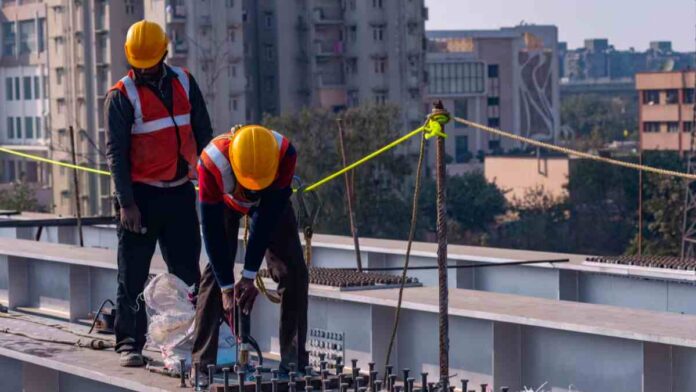Building work can be physically demanding, resulting in excessive heat production within the body. During the scorching heat of summer, building workers have to work outside.
Some building work is done in uncontrolled environments, such as attics and crawlspaces, or in direct sunlight on rooftops, highways, and runways. While doing other building work, construction workers may be exposed to work-related heat sources, such as welding and cutting torches or hot asphalt contained in roofing kettles and paving machines. All of these factors can put building workers at risk for HRIs.
Dr. Divya Gopal, Consultant, Internal Medicine, Sir H N Reliance Foundation Hospital, has explained how we can assist construction workers in hot weather.
She says, “Workers living in houses that do not have cooling may be more vulnerable to HRIs as it lowers their ability to recover from the hot day at night.” Injuries to building workers on hot working sites can result from poor thinking, sticky, slippery hands, dizziness, etc.”
Dr. Divya Gopal says:
- Schedule hot chores for the cooler portion of the day, and/or alternating (not consecutive) days. Schedule hot routine maintenance work for cooler periods of the year wherever feasible. Provide rest and recovery spaces that are cool, shaded, or air-conditioned.
- Make certain that workers take proper rest periods to cool down and hydrate. Workers should dress in light-colored, loose-fitting, and breathable apparel.
- Allow workers to immerse their hands and forearms in a large container (a cooler, large bucket, or plastic tub) of cool (10-20°C or 50-68°F) water, which reduces skin and core temperature.
- Change work/rest schedules to allow for additional downtime. Workers in the heat for 2 hours and engaged in moderate job activities can drink 1 glass of water every 15-20 minutes, but if they are sweating profusely for several hours, they should consume sports drinks containing balanced electrolytes.
- Provide adequate, convenient toilet facilities so that employees do not avoid hydration in order to avoid using the restroom.
When the temperature goes above 27°C (80°F), replace the water. Increase the team size to limit heat exposure for each crew member. By doing so you will continue with the work while some crew members will take rest. You can also stop workers from continuing their work on a day when they suffer from heat-related discomfort




